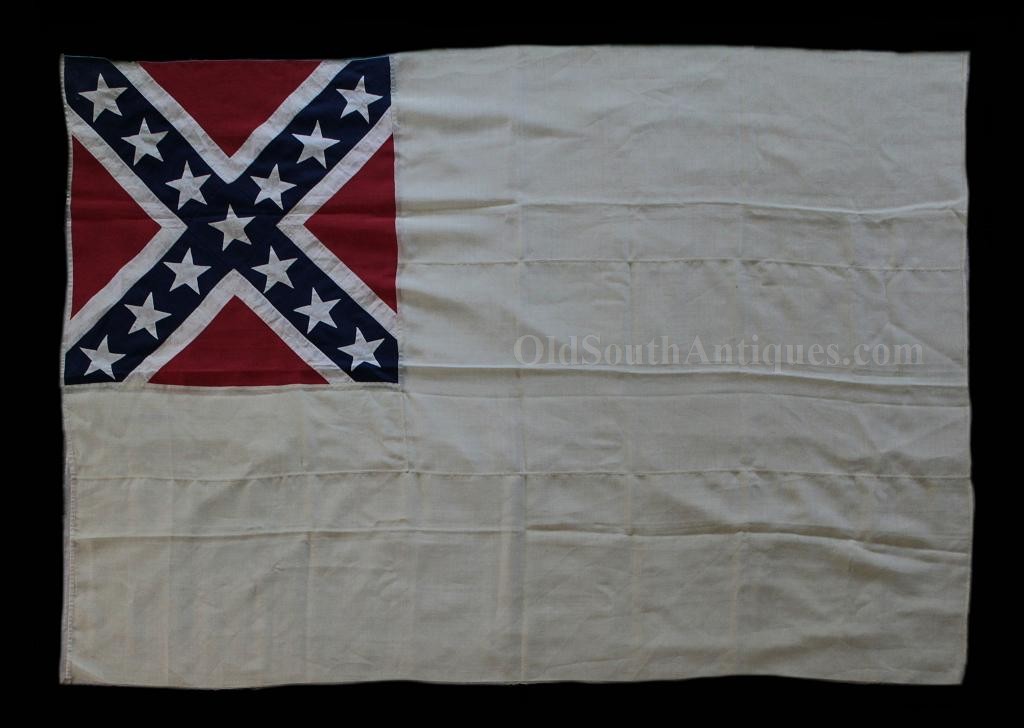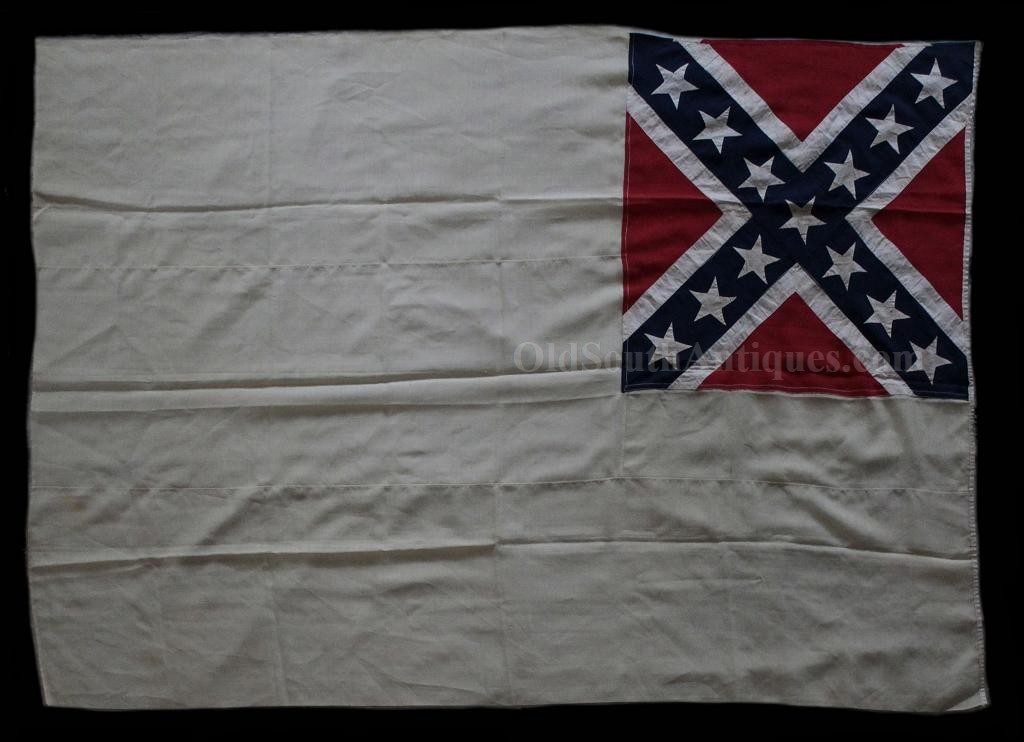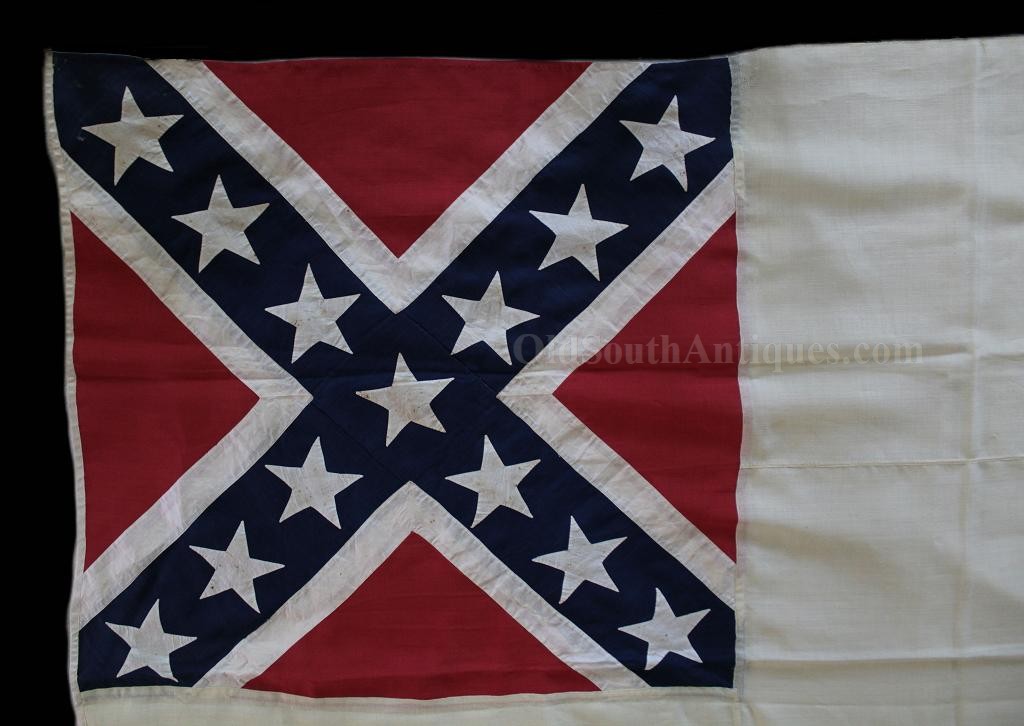
| Catalog | Past Items | Order Info | Terms/Conditions | About Us | Inventory Clearance |
The flag of the Confederacy rose and fell in only four years. It arose over a prosperous, peaceful nation whose mothers sent their husbands and sons to die, if need be, under its folds. And die they did, from the plains of Manassas to the fields of Pennsylvania, from Shiloh to Nashville, from the Wilderness to Appomattox and from Southern seaports to the shores of distant lands.
The flag the Confederacy adopted as its National Standard on March 4, 1861 was first raised on Capitol Hill in Montgomery, Alabama. The honorable Jefferson Davis, ex-U.S. Secretary of War and new president of the Confederacy, invited Letitia Christian Tyler to raise the first official flag of the new Confederacy. Miss Tyler had been born in the White House, the capitol of the United States. She was the granddaughter of ex-U.S. President John Tyler. The seven star flag Miss Tyler raised that day has come to be known as the First National Confederate Flag, or the Stars and Bars. The circle of seven stars in the canton represented the seven Southern States that had seceded up until that time: South Carolina, Mississippi, Alabama, Florida, Georgia, Louisiana, and Texas.
As disunion became a reality and war fever swept the nation in the late winter and spring of 1861, countless towns, communities, and counties formed local military units, or companies, in hopes of participating in the coming conflict. Lincoln’s illegal demand that the Southern States aid in subjugating her sister states had forced another six states to secede. Virginia on April 17th, Arkansas, May 6th, Tennessee, May 7th, North Carolina, May 20th, Missouri, August 5th, and Kentucky on November 5th. A star was added to the Confederate National Flag for each new state that joined the Southern Confederacy.
During the Battle of Manassas, it became obvious that the Confederate First National "Stars & Bars” would not do on the battlefield; it was too hard to tell it from the old "Stars and Stripes”. It had intentionally been similar to the flag their forefathers fought under, but a distinct, soldier’s flag was needed and what we now know as the Battle Flag was the result.
After two years of war, there was only
hate for the old Stars and Stripes, so by an act of congress, signed into law
by the president on May 1, 1863 a new flag was selected. After some last minute alterations, the final
design was the "Stainless Banner”. It
was part soldier’s flag and part national flag. The canton consisted of the battle flag, and the field a pure white,
symbolizing the purity of the Confederate cause and her people. The Second National Flag was used as a
National, and also as a Regimental, Battle flag, by both the Eastern and
Western Armies, and as a Naval Flag.
This 2nd National
Confederate Flag shown here is thought to have been manufactured at Bermuda or
Nassau, and was run through the blockade at Wilmington, North Carolina. It has a service history with the CSS Nansemond. Measuring 54.75 on the hoist by 79 inches
on the fly, the flag has a ½ inch broad cotton hoist, which retains one pair of
its original ties at the lower hoist. The
flag comes with supporting documentation showing that it was purchased from the
descendants of Acting Master A. Wallace Masters, who served on the CSS Nansemond
as a part of the James River Naval Squadron, Semmes Naval Brigade.
The CSS Nansemond was a screw
steamer of 80 tons that was built in 1862, at Norfolk, Virginia. and was
destroyed in Richmond, Virginia, on April 3, 1865, to prevent her falling into
enemy hands. Commanders were Flag Officers
Barron, Rutledge, Rochelle and Hays. The
CSS Nansemond was engaged at Howlett’s Virginia, Dutch Gap and Fort
Harrison. I am not of the opinion that it was the flag
of the Nansemond, but rather it was a flag on the Nansemond, perhaps as
a boat or launch flag. It is without a doubt
a Confederate flag that was used by the Confederacy and it comes with letters
of authenticity from Textile Preservation Association, and Author Howard Madaus.
Copyright © 2025 OldSouthAntiques.com All Rights Reserved.
Privacy Policy | Terms of Use
Powered by Web-Cat Copyright © 1996-2025 GrayCat Systems


